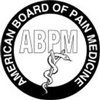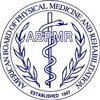
Tennis elbow, medically known as lateral epicondylitis, is a common condition that causes pain and discomfort in the outer part of the elbow. Despite its name, tennis elbow doesn’t only affect tennis players. It’s a condition that can impact anyone who performs repetitive arm and wrist movements, such as painters, plumbers, or even office workers. This article explores the nature of tennis elbow, its causes, symptoms, and treatment options, focusing on how interventional pain management can provide relief and restore functionality.
What Is Tennis Elbow?
Tennis elbow is a form of tendinitis—an inflammation of the tendons—that affects the tendons connecting the forearm muscles to the outer elbow. It typically develops due to overuse or repetitive strain, leading to small tears in the tendons, which can result in pain, weakness, and inflammation.
Causes of Tennis Elbow: Tennis elbow is caused by repetitive motion and overuse of the forearm muscles. Activities that involve gripping, lifting, or twisting motions—such as using tools, typing, or playing sports—can strain the tendons and lead to the condition.
Certain factors can increase the risk of developing tennis elbow, including:
- Age: Most cases occur in individuals between the ages of 30 and 50.
- Occupation: Jobs that require repetitive arm movements, such as carpentry or assembly line work, can predispose individuals to this condition.
- Sports: Activities like tennis, squash, or weightlifting often involve repetitive wrist and arm motions.
Recognizing the Symptoms
Tennis elbow typically manifests as pain and tenderness on the outer part of the elbow. Other common symptoms include:
- Pain that worsens with gripping, lifting, or twisting motions.
- Weakness in the forearm and wrist.
- Difficulty performing simple tasks, such as shaking hands or holding a coffee cup.
- Stiffness in the elbow joint, especially in the morning.
If left untreated, the condition can significantly impact daily activities and reduce the quality of life.
Diagnosing Tennis Elbow
A thorough clinical evaluation is essential for diagnosing tennis elbow. Physicians often begin with a detailed medical history and a physical examination to assess the location and severity of the pain. Diagnostic imaging tests, such as X-rays or MRI scans, may be used to rule out other conditions, such as arthritis or nerve compression.
Treatment Options
The treatment for tennis elbow often starts with conservative approaches, including:
- Rest and Activity Modification: Avoiding activities that exacerbate the pain is crucial for healing. Temporary rest allows the tendons to recover.
- Physical Therapy: Physical therapy focuses on stretching and strengthening exercises to improve flexibility and reduce strain on the tendons. Techniques like eccentric strengthening have shown promising results in managing symptoms.
- Medications: Nonsteroidal anti-inflammatory drugs (NSAIDs) can help reduce pain and inflammation. Topical NSAIDs are also an option for localized relief.
- Bracing or Splinting: Using an elbow brace or forearm strap can alleviate stress on the affected tendons and promote healing.
Interventional Pain Management for Tennis Elbow
For individuals who do not respond to conservative treatments, interventional pain management offers advanced solutions to relieve pain and improve functionality. Here are some effective interventional techniques:
- Corticosteroid Injections: Corticosteroid injections can provide rapid pain relief by reducing inflammation in the affected area. However, these injections are typically recommended for short-term relief and are not intended for repeated use.
- Platelet-Rich Plasma (PRP) Therapy: PRP therapy involves injecting a concentration of the patient’s platelets into the affected tendon. This treatment promotes natural healing by delivering growth factors that repair damaged tissues. Studies have shown that PRP therapy can provide long-term relief for chronic tennis elbow.
- Extracorporeal Shock Wave Therapy (ESWT): ESWT uses high-energy sound waves to stimulate healing and reduce pain in the affected area. This non-invasive treatment can be an excellent option for patients seeking alternatives to injections or surgery.
- Nerve Blocks: In cases of severe pain, nerve blocks can provide temporary relief by interrupting pain signals to the brain. This technique can also help physicians identify the source of pain.
- Ultrasound-Guided Tenotomy: This minimally invasive procedure involves using ultrasound guidance to remove damaged tendon tissues. Tenotomy can provide significant pain relief and restore functionality.
Preventing Tennis Elbow
Prevention is always better than cure. Here are some tips to reduce the risk of developing tennis elbow:
- Proper Technique: Use correct techniques when performing repetitive tasks or playing sports.
- Strength Training: Strengthen the forearm and wrist muscles to reduce strain on the tendons.
- Ergonomic Adjustments: Ensure workstations are set up to minimize stress on the arms and wrists.
- Stretching: Incorporate regular stretching exercises into your routine to maintain flexibility.
When to Seek Medical Attention
If you experience persistent elbow pain that does not improve with rest or over-the-counter treatments, it’s essential to consult a healthcare professional. Early intervention can prevent the condition from worsening and improve outcomes.
Conclusion
Tennis elbow can significantly impact daily activities and reduce the quality of life. However, with proper diagnosis and a comprehensive treatment plan, individuals can achieve relief and regain functionality. Interventional pain management offers advanced solutions for those who do not respond to traditional treatments, providing hope for long-term recovery.
At Precision Pain Care and Rehabilitation, we specialize in treating conditions like tennis elbow through personalized care and cutting-edge interventional techniques. By addressing the root cause of pain, we aim to help patients return to their daily activities with minimal discomfort.
Precision Pain Care and Rehabilitation has two convenient locations in Richmond Hill – Queens, and New Hyde Park – Long Island. Call the Queens office at (718) 215-1888 or (516) 419-4480 for the Long Island office to arrange an appointment with our Interventional Pain Management Specialists, Dr. Jeffrey Chacko or Dr. Sonny Ahluwalia.
Note: This article is for informational purposes only and should not be considered medical advice. Consult a healthcare professional for personalized recommendations.












